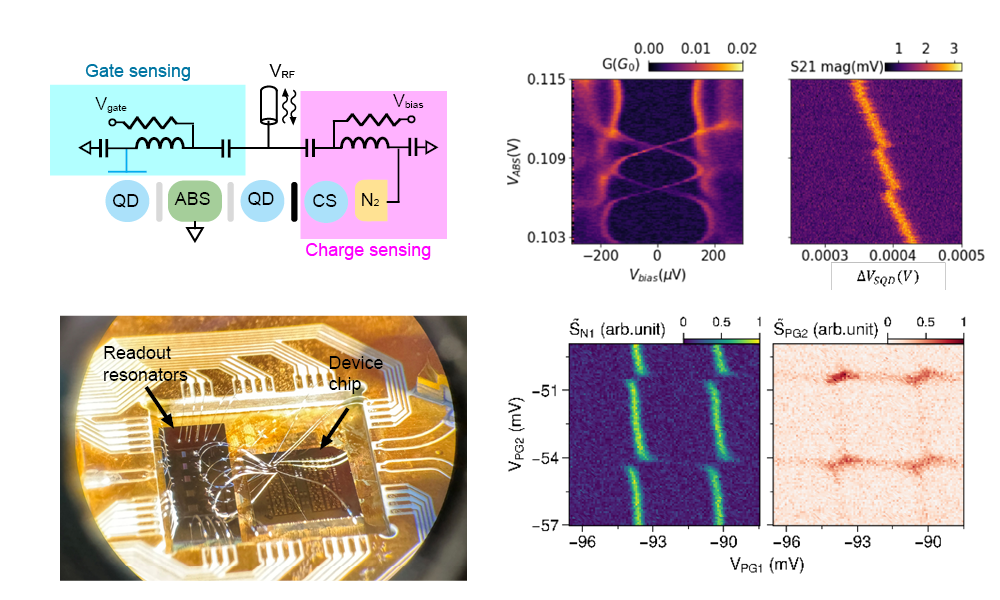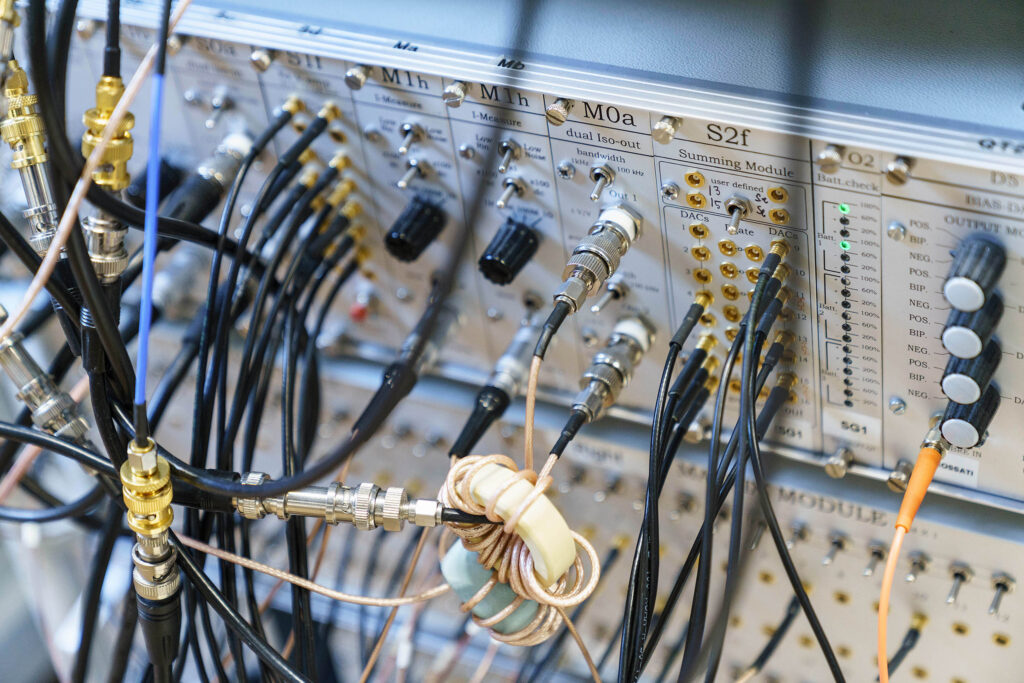Kitaev chains
A chain of quantum dots (QDs) in semiconductor-superconductor hybrid systems can form an artificial Kitaev chain hosting Majorana bound states (MBSs). These zero-energy states are expected to be localised on the edges of the chain, at the outermost QDs. The remaining QDs, comprising the bulk, are predicted to host an excitation gap that protects the MBSs at the edges from local on-site perturbations.

Parity readout of QD-hybrid systems
Hybrid quantum dot (QD)–superconductor systems provide a promising platform for realizing Majorana zero modes and Kitaev chain based qubits. Fast, non-invasive readout is essential for controlling such systems, and radio-frequency (RF) gate reflectometry offers a compact, sensitive method for probing charge and spin dynamics. In our lab, we apply charge sensing and gate sensing to probe QD-hybrid systems. These techniques provide a fundation for readout Kitaev chain based qubits.

Kitmon project
This is a qubit that explicitly makes use of near-degenerate modes of short Kitaev chains. Specifically, by connecting two chains of two sites each with a tunnel coupling (four quantum dots(QDs) in total, the minimal number of dots needed to create a qubit), an effective Josephson junction forms with an energy difference that is 4π periodic in the superconducting phase difference between the two Kitaev chains. This 4π periodic potential effectively creates a qubit subspace based on the even/odd parity between the two arrays.
Researches in our lab including developing Kitaev chains on InAs/Al hybrid systems, and flip-chip technology for cQED experiments.


